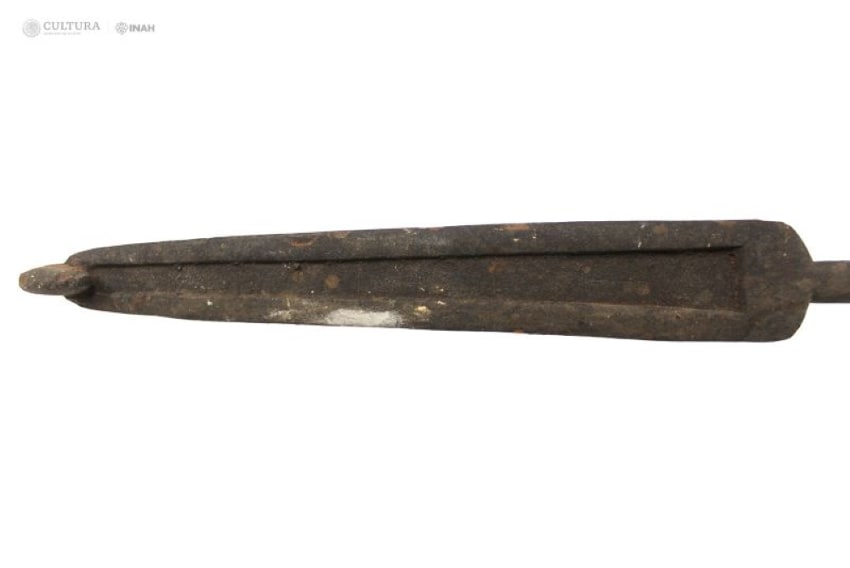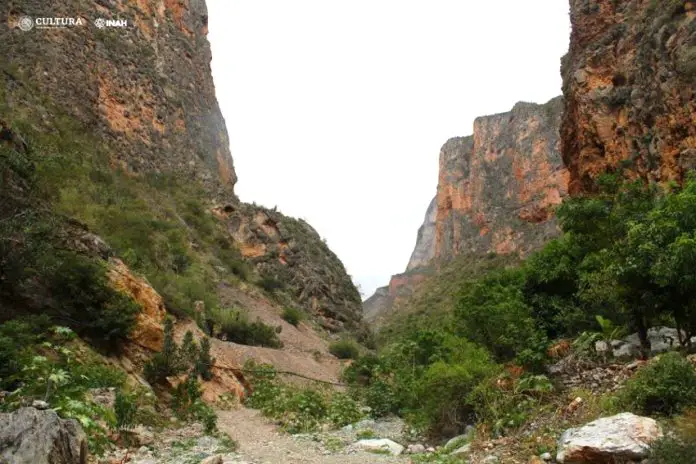Hunting weapons and other items dating back approximately 1,900 years have been found in a cave in the central state of Querétaro.
The National Institute of Anthropology and History (INAH) announced the discovery of the objects this week, which were found last year by four members of the Querétaro Cavers’ Association (GEQ) and then further explored by INAH.

The spelunkers located the items in a remote ravine inside the Cueva del Tesoro (Treasure Cave), located about 40 kilometers northwest of Bernal, a popular Pueblo Mágico lying east of Querétaro city. The group notified INAH’s Querétaro Center, which put its team of archaeologists and speleologists into action.
To reach the trove of items from the cave floor, the INAH team had to ascend 200 meters from the bottom of the ravine to the cave, and then another 200 meters through a narrow passage.
The findings included wooden hunting instruments that, according to the results of a radiocarbon study, date from A.D. 7 to 132, meaning they were preserved for about two millennia. They were used by hunter-gatherers who lived in this semi-desert region for at least 9,000 years, INAH noted in a press release.
One of the objects is an atlatl measuring 51.5 centimeters. Sometimes called a spear-thrower, an atlatl is a tool that lets its user propel darts or arrows at high velocity. Alongside the atlatl were the remnants of two darts measuring 79 and 66 centimeters. Two pieces of crafted wood that INAH identified as probable digging sticks were also found with the hunting tools.

All the items are well-preserved thanks to the dryness of the cave, INAH noted. Why the instruments were left in such a remote and hidden area is a mystery that will be clarified by future studies, the agency added. The agency’s most recent advances in analyzing the items will be made public at a conference this Saturday at the Templo Mayor museum in Mexico City.
INAH said that amateur spelunkers and its own archaeologists notified the agency of a dozen “hunting scenes” in Querétaro last year. Full sets of hunting equipment, however, are rarer: the agency described the items found in the Tesoro cave as “one of the few sets of pre-Columbian hunting tools found to date in Mexico.”
One of the first known discoveries of hunting tools in the area was in the late 1950s by American Cynthia Irwin-Williams, a pioneer among female archaeologists. Her findings, including projectile arrows dating to 7000 B.C., were made in the El Tecolote cave near Tequisquiapan, Querétaro.
Although finding hunting tools is fairly rare, discoveries inside caves are somewhat common occurrences around Mexico. Just last month, INAH announced it had found human remains, pottery fragments dating back 500 to 800 years and other objects in two caves in the state of Quintana Roo. One finding was made in Tulum and the other was nearby.
Another noteworthy find announced by INAH early this year included human remains, 1,500 utensils, spearheads and other artifacts between 2,500 and 4,500 years old in a cave in the state of Nuevo León.
With reports from Infobae and La Brújula Verde
